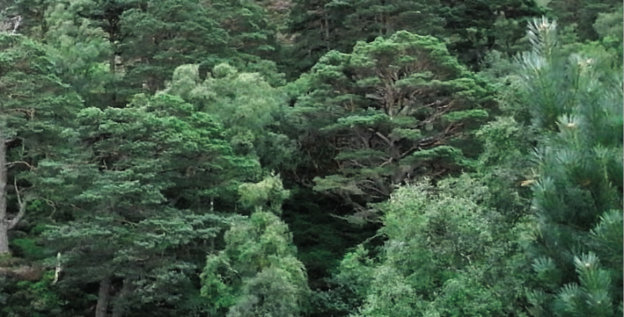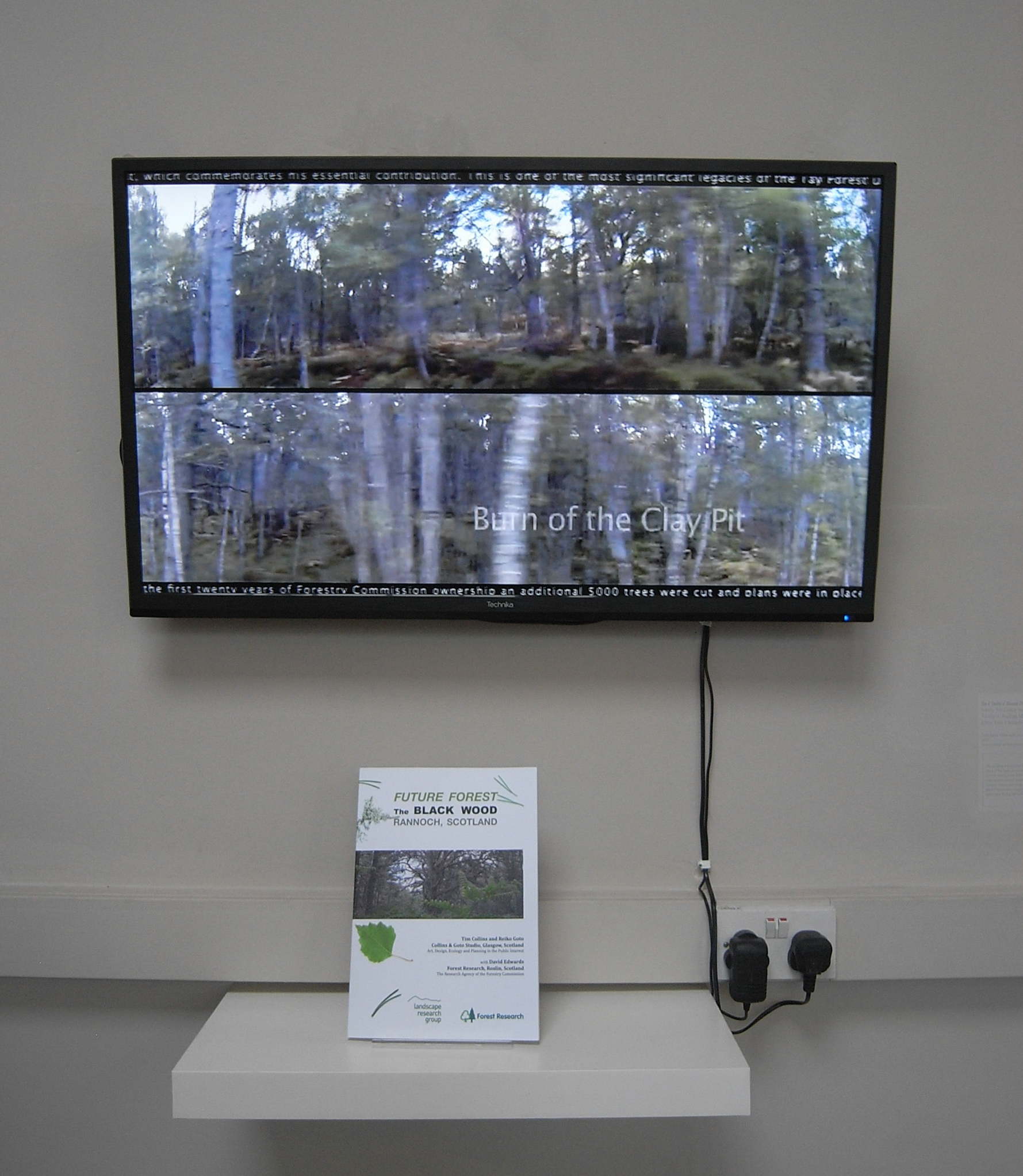Tim Collins & Reiko Goto, with Sara Ocklind, Gerry Loose, Morven Gregor, and Chris Fremantle. Curated by Holly Knox Yeoman. The effort was Initiated by James Howie of ASCUS.
Summerhall, Edinburgh
For the Edinburgh Science Festival
4 April – 22 May, 2015
Gallery Links: The exhibition, Summerhall TV Interviews with the artists. Collins and Goto host the Breadalbane Deliberation with Alec Finlay an artist and poet, Anja Gunderloch an expert in 18th century Celtic literature, Jake King an expert in the terminology and meaning of the Gaelic landscape and John Stuart Murray a biologist and a landscape architect. During the exhibition Chris Fremantle hosted The Caledonian Everyday a series of discussions with artists and poets, natural scientists and land use managers.

Reiko and Sara Ocklind considering the map.
Comh-Chomhairle Bràghad Albainn (The Breadalbane Deliberation) Artists Tim Collins and Reiko Goto with Sara Ocklind refining the final form. Translator: Beathag Mhoireasdan. Medium: Ordinance Survey maps with translated text, silver leaf. The map depicts the historic district of Breadalbane and the upper catchment basins of the Tay river; the landscape has been historically described in Gaelic on the OS Maps. Like the Gaelic language the future form and extent of the Caledonian forest is an idea to be both experienced and widely discussed amongst diverse communities of interest. We offer initial translation of over 1000 Gaelic place names and a map with the Black wood as a small contribution to that deliberation.
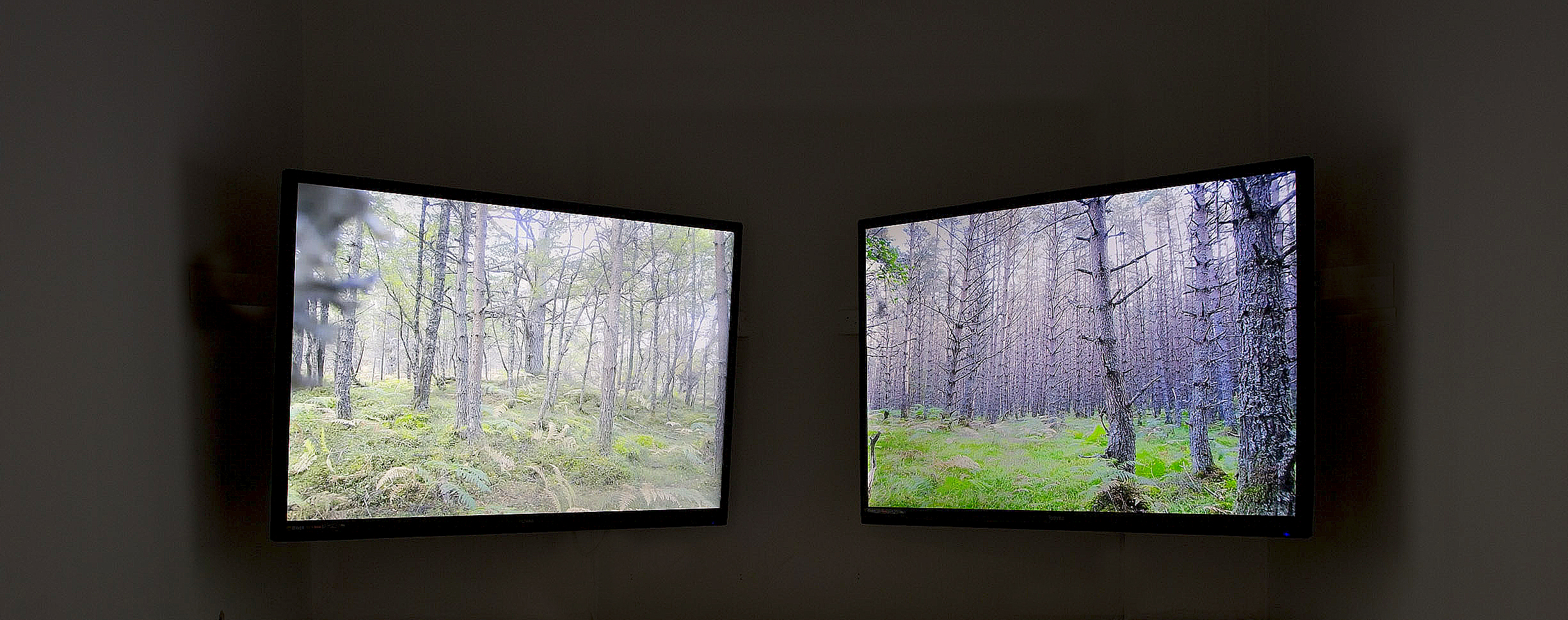
Dual monitor presentation of a simultaneous time lapse looking west and east.
Am Beàrn Eadar Na Craobhan… (The space between the trees…) Artists Tim Collins and Reiko Goto. Editor: Kate V Robertson. Medium: Time lapse video. In the space between the trees… we can see that wind and light create very different kinds of aesthetic conditions. On the left monitor is a relatively young forest of equally aged trees. On the right you see a forest with new growth amongst older trees. Light, wind and understory shape the viewers experience in the Black Wood.
Tha a’ Choille a’ Gluasad (The Forest is Moving). Artists Tim Collins and Reiko Goto. Translator: Beathag Mhoireasdan. Editor: Kate V Robertson. Medium: Time lapse video with narrative. (First exhibited at Perth Museum and Art Gallery). The scrolling text outlines the conservation value of the Black Wood then asks why the cultural record of the Black Wood is largely missing from botanic gardens, museums, artwork, stories and songs. It closes by asking what it would take to realize a forest that takes more than a day to walk through.

The work emerges from the idea of taking the last shearing and turning it into a large scale felting project that marks the landscape one last time.
Caora (sheep) Artists, Reiko Goto and Tim Collins. Medium: wool felt. Sheep are considered the other critter of note that keeps the landscape of Scotland uniquely treeless. Here we present a small sculptural work in hand made felt that raises questions about agriculture, sheep and the treeless landscape. This builds on a previous companion work Lanolin – Can you see Scotland now? (a Scottish flag created out of raw wool)
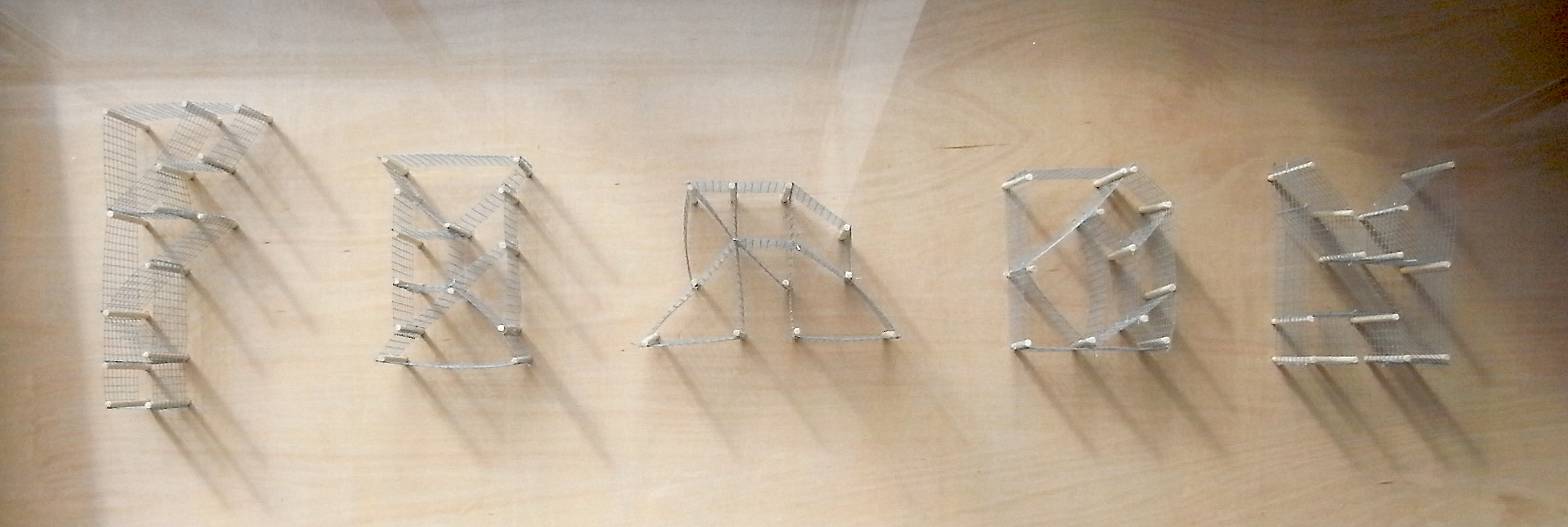
The name… as a means of exclosure, insuring a new crop of natural regeneration.
Fiadh (deer) Artists Reiko Goto and Tim Collins. Medium: Wire screen, wood, shadow and light. Here we present a model deer exclosure, a sculpture that names the critters (presumed to be) the major source of tree loss in the Caledonian Forests in the highlands of Scotland. We imagine a large-scale sculptural work located wherever it will benefit a forest and contribute to the public discourse about land, people, deer and trees.
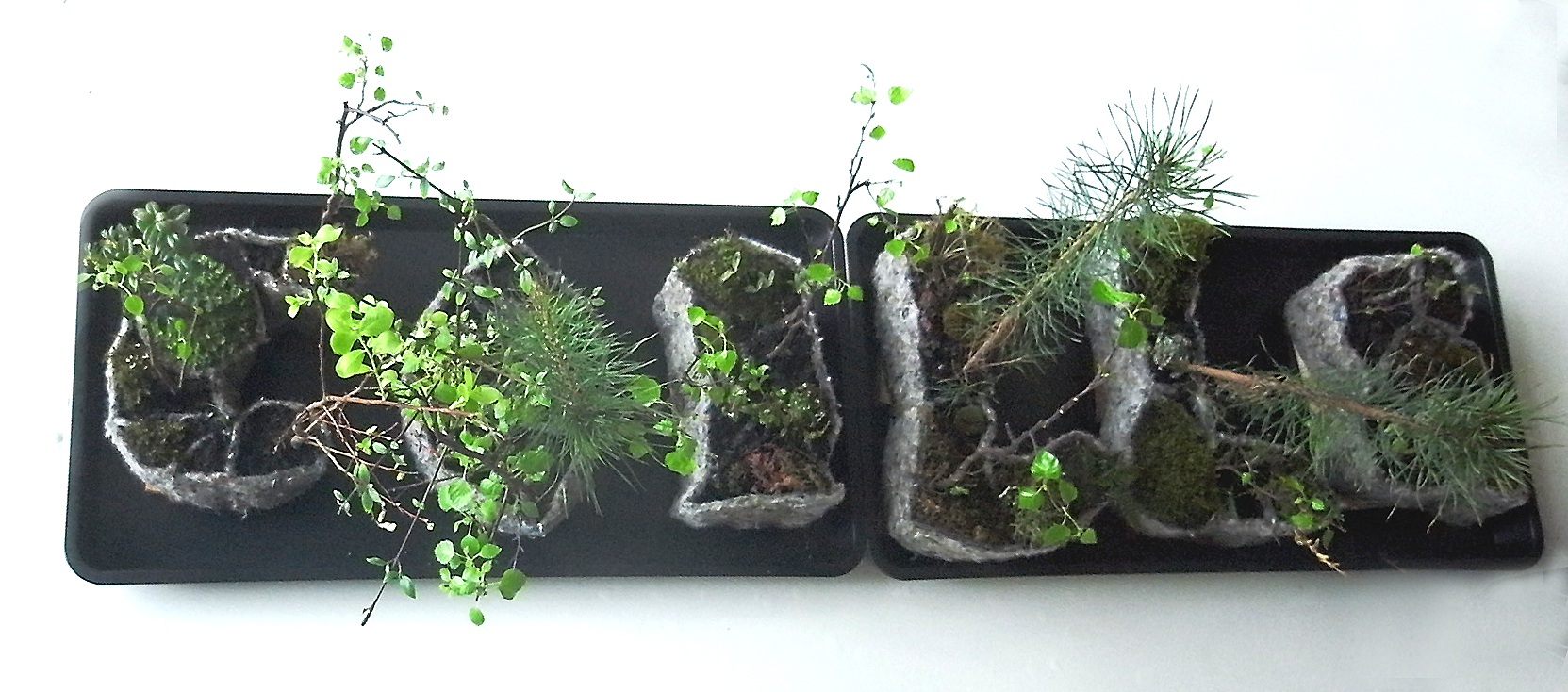
Coille… forest in Scottish Gaelic.
Coille Dubh Rainich ( The Black Wood of Rannoch) Artists Reiko Goto and Tim Collins. Medium: Felt, plants, text. The artists fill the gap between gallery and forest by creating the name (the Black Wood of Rannoch) in Gaelic with plants typical to that ancient forest. This centrepiece integrates sign, symbol working with living things to establish an image and an idea in Summerhall that is correspondent to the realities in the Black Wood of Rannoch. Using felt for structure, we have assembled a mix of plants that are typical of that ancient forest. We would like to donate this work to someone with enough land and the attention necessary to nurture a small Caledonian forest to its mature state.
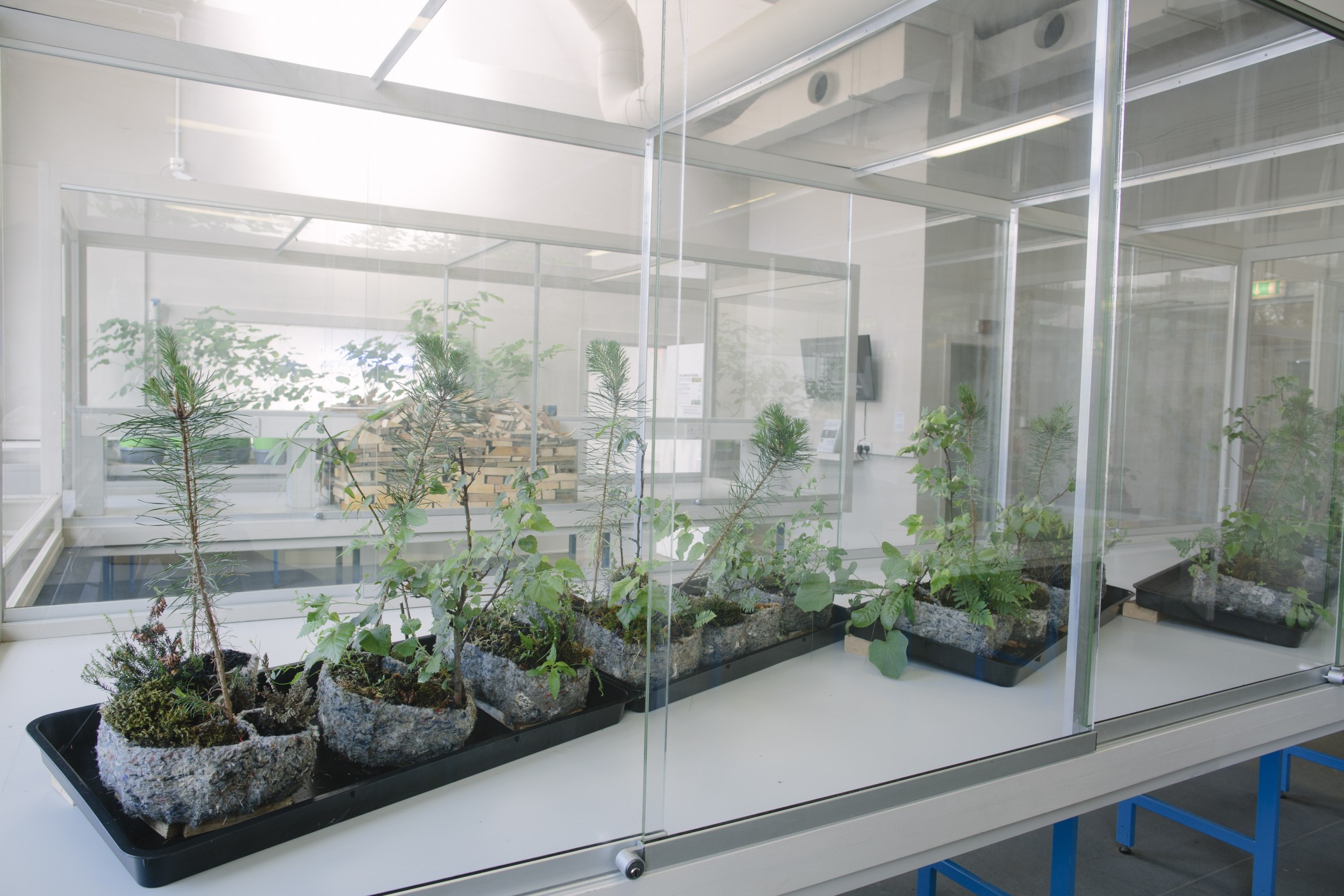
Coille Dubh Rainich spelled out across three meters.
Can cultural ecology be recovered when it has been lost over a period of three hundred years or more? This is the question that emerged as Collins & Goto immersed themselves in the Blackwood of Rannoch. For Sylva Caledonia they work with Sara Ocklind to present sculpture, video and a map that explores the gap between the gallery and the forest but also the relationship between the past, present and future.
How do we perceive woodlands? This is the central question for Loose and Gregor. Having lived in and travelled through the Sunart Oakwoods for a number of years, the work here in Sylva Caledonia presents some reflections on that experience: the building of a relationship and the development of a dwelt, pragmatic and empirical understanding of the interconnected lives in and of the oak wood.
During the exhibition of Sylva Caledonia Chris Fremantle, founder of ecoartscotland worked on a seminar series that explores specific questions about the cultures, values and perceptions of ancient woodland in Scotland. Seminar presenters include artists, poets, forestry scientists, ecologists and land managers.
[gview file=”https://eden3.net/wordpressed/wp-content/uploads/2015/04/Sylva-Caledonia-CatalogueBinder.pdf”]
